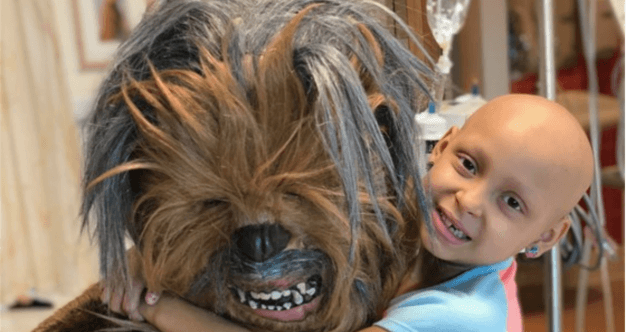Zoe Figuera is a little girl from outside San Diego who just finished sixteen months of intense treatment for a cancer called neuroblastoma. The end of treatment coincided with Zoe’s eight birthday. At her party, Zoe decided that the best way to celebrate was by giving presents to other kids.
"Zoe is remarkable," her mom, Sheena Figueroa, told NBC’s Today Show. "She said to me, 'I have everything I need.'"
Read More
Zoe’s birthday was a huge party. Sheena said she wanted party to feel like a quinceañera, which in many Hispanic families is a celebration of womanhood that usually happens at the age of fifteen.
"We don't know what the future holds for Zoe. The relapse rate for neuroblastoma is 50 percent, and there's no cure for relapsed neuroblastoma," Sheena continued. "We're optimistic, but we wanted to pull out all the bells and whistles just in case."
Information about childhood neuroblastoma
Neuroblastoma accounts for about seven to 10% of all pediatric cancers in the United States with about 800 new cases identified each year. It accounts for more than 50 percent of cancers diagnosed under the age of one, according to the Children’s Hospital of Philadelphia.
RELATED: A Teenage Love Story, And Getting Through Cancer: Meet Sophie and Haydn
Neuroblastoma develops from nerve cells in the fetus, and often affects the small glands above the kidneys called adrenal glands, but can be found in other locations such as the abdomen, chest, neck or spine. The most common primary sight is the abdomen. Some forms of this cancer will spontaneously disappear on their own, but for most children, treatment such as surgery and chemotherapy and/or radiation is required.
Signs of neuroblastoma vary depending on the size of the tumor and on whether the tumor has spread. If the child has a tumor in the abdomen, they may experience bellyaches, weight loss or a bigger abdomen. Some children only complain of general aches and pains.
For children with what’s called “low-risk disease,” who are diagnosed under the age of one or who have only small, easily removable tumors, usually undergo a simple surgical procedure with careful follow up.
Children with what’s called “Intermediate-risk disease,” meaning the tumor is larger and has not spread, or is a baby whose cancer has spread, treatment usually includes a combination of surgery and chemotherapy.
About half of neuroblastoma patients have high-risk disease, either because the tumor has spread to other parts of the body or because test results show high-risk features. For children with this level of risk, treatment may include a combination of chemotherapy, surgery, and radiation therapy including proton therapy, as well as high-dose chemotherapy followed by his or her own stem cell rescue. It may also include immunotherapy, which uses the body’s own immune system to fight the disease.
Zoe’s birthday celebration
Zoe’s birthday party was scheduled for July 6th, and on the invites, Zoe asked guests to bring an unwrapped toy or donate to local foundations for children with neuroblastoma. Her friends and family donated a total of $750 and 200 presents.
"It's our way of giving back while celebrating Zoe's life," Sheena said.
Her party, which took place at a Veterans of Foreign Wars hall in El Cajon, California, near where the family lives. The party featured hired face painters, balloon artists and a mobile gaming truck.
Zoe’s mom posted photos on Facebook of Zoe at the event wearing a gold and white dress with a gold headband, smiling with her friends, and dancing, with the caption, “Zoe’s End of Treatment Celebration.”
Sheena doesn’t need spend as much time at the hospital as she did when Zoe was sick, but she does stay in touch with some of the people she met int eh cancer community, including a couple whose child was diagnosed with neuroblastoma the day Zoe was told she was in remission. “We talk regularly. I know they are scared just like we were,” Sheena said. “I keep telling them there’s hope.”
Learn more about SurvivorNet's rigorous medical review process.


